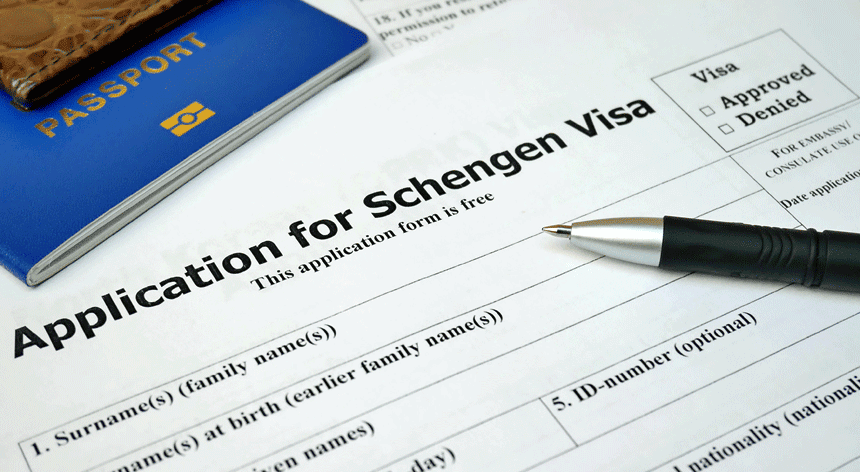Schengen visa appointment
Comprehensive Guide to Schengen Visa: Types, Application Principles, and Common Questions
contents
1.Common types of Schengen visasRequirements for Applying a France Schengen visa
2.Application principles of Schengen visas
3.Must I enter or leave the Schengen area from the country that issued the visa?
4.Difference between Schengen visa and EU visa
Conclusion
FAQ
The Schengen Visa is currently one of the visas frequently applied for by global travelers and is mainly applicable to Schengen area countries in Europe. This visa not only provides travelers with the convenience of freely entering and exiting multiple countries but also confuses many people due to its diverse types and application details. This article will deeply analyze the types, application processes and common questions of Schengen visas to help you successfully obtain a Schengen visa and plan your European trip with peace of mind.
1.Common types of Schengen visas
Schengen visas are mainly divided into several types. According to your travel purpose and stay duration, it is particularly important to choose the appropriate visa type.
(1) Type C visa - Short-term Schengen visa
The Type C visa is the most common type of Schengen visa and is suitable for applicants who stay in the Schengen area for a short period. Travelers holding this type of visa can choose single-entry, double-entry or multiple-entry according to the validity period of the visa.
This visa is usually applicable in the following situations:
• Tourism: Those who plan short-term tourism can apply for this type of visa.
• Visiting relatives and friends: When visiting relatives or friends in Schengen countries, you can apply for this type of visa.
• Business trips: If you need to conduct business negotiations, participate in exhibitions or attend conferences in the Schengen area, the Type C visa is an ideal choice.
(2) Type D visa - Long-term national visa
The Type D visa, also known as the "national visa", is suitable for applicants who plan to stay in a certain Schengen country for a long time. Its particularity lies in that the visa holder can only stay in the designated country for a long time and cannot freely enter and exit the Schengen area.
This visa is commonly seen in the following situations:
• Work visa: You are employed by a company in a certain Schengen country and need to live and work there for a long time.
• Study visa: Students who need to stay for a long time when studying at schools in Schengen area countries.
However, holders of Type D visas can transit through other Schengen countries with the permission of the visa-issuing country, but the stay time must not exceed 5 days. On this type of visa, you may see the annotation "+ 1 transit".
(3) Type D+C visa - Comprehensive Schengen visa
The Type D+C visa combines the characteristics of Type C and Type D visas. It allows the holder to stay in a certain country for a long time and also go to other Schengen countries in the short term. This visa is suitable for applicants who need to frequently enter multiple Schengen countries but mainly stay in a certain country.
(4) Type B visa - Transit visa
The Type B visa is a transit visa and is suitable for passengers who need to transfer or make a brief transit through Schengen countries. Although this type of visa is less common, it plays an important role for certain specific international flights and itineraries.
2.Application principles of Schengen visas
Applying for a Schengen visa is not complicated, but following these principles can greatly increase the success rate.
(1) Apply for a visa from a single Schengen country
If you only plan to visit one Schengen country (e.g., visiting France exclusively), then you must submit a visa application to the embassy or consulate of that country.
(2) Application process when staying in multiple Schengen countries
If your itinerary includes multiple Schengen countries, in principle, you need to submit an application to the country where you stay the longest. For example, if you plan to go to France and Germany, but stay in France for a longer time, then you should apply for a visa from the French embassy.
(3) Application processing when there is no clear main stay country
If the stay time in multiple Schengen countries in your itinerary is equal and you cannot determine the main stay country, you can apply for a visa from the first entry country. However, it should be noted that the first entry country is only a choice under "special circumstances". Generally, it is recommended to apply to the main stay country first.
3.Must I enter or leave the Schengen area from the country that issued the visa?
(1) Can I not go to the issuing country?
In theory, holding a Schengen visa issued by any Schengen country, you can enter from any Schengen country and do not have to enter or leave the Schengen area from the issuing country. This principle is consistent with the requirement of "applying for a visa from the main stay country".
However, in actual operation, some problems may be encountered. For example, if you hold a Schengen visa issued by France but choose to enter from Germany, the border inspection may ask you to show proof of going to France. If you cannot provide a credible itinerary proof, you may encounter interrogation or even be refused entry.
(2) Impact of deviating from the original itinerary
Although there is no legal requirement in the application process of the Schengen visa to strictly follow the submitted itinerary, if your actual itinerary is seriously inconsistent with the planned itinerary when applying, you may face scrutiny when applying for a visa again in the future. For example, when applying for a visa, you claim that you will visit France, but in the end you only go to Spain and Italy. The visa officer may doubt the credibility of your itinerary when reviewing it next time.
If you’re unsure about any part of the application process, we recommend consulting with visa experts at Skytravel, who can guide you through the requirements.
Skytravel Global was established in 2020 and is based at 1 Jordan Street, Manchester, United Kingdom. We provide Schengen visa consultancy and assistance in the UK. Since our establishment, we have served over 10,000 clients.
We Provide:
1. Schengen Visa Appointment Booking
2. Visa Document Prep
3. 6-month Visa Validity guaranteed
4.Difference between Schengen visa and EU visa
Many people mistakenly think that the Schengen visa is the EU visa, but in fact, Schengen countries and EU member states are two different concepts.
• The Schengen area includes some non-EU countries such as Switzerland, Norway, and Iceland.
• Some EU countries have not joined the Schengen area, such as the United Kingdom, Ireland, Romania, and Bulgaria.
Therefore, the so-called "EU visa" does not exist. The Schengen visa is only applicable to Schengen area countries, not the entire EU.
Conclusion
There are various types of Schengen visas. When applying, you need to choose the appropriate visa type according to your personal itinerary and strictly follow the application process. Understanding the characteristics and application principles of each visa can not only improve the success rate but also avoid possible troubles when applying for a visa in the future. Prepare all necessary materials and submit the application in accordance with relevant regulations, and you will smoothly start your European trip.
FAQs
(1) Can I apply for a multiple-entry Type C visa?
Yes, you can apply for a single-entry, double-entry or multiple-entry Type C visa according to your itinerary. Generally speaking, business travelers or applicants with special needs are more likely to obtain multiple-entry visas.
(2) Can I still enter smoothly if my itinerary changes?
The itinerary change will not directly affect the validity of the visa. However, as mentioned above, if you deviate too much from the original plan, you may encounter difficulties when applying for a visa next time.
(3) Does the Schengen visa have a clear stay time limit?
The Type C visa usually allows a stay of no more than 90 days within 180 days. The specific stay duration and visa validity period will be determined according to the itinerary arrangement and personal situation when applying.
(4) With a Schengen visa, can I freely enter all EU countries?
No. The Schengen visa is only applicable to Schengen area countries and does not include all EU countries.
(5) What is the best time to apply for a Schengen visa?
(1) It is usually recommended to apply for a visa at least 15 days before traveling. The visa processing time of some countries may be longer, so it is recommended to prepare as early as possible.
If you are in a hurry, Our Fast Track Schengen Visa Appointment service helps you secure your visa appointment at the earliest available date, whether you’re applying for a France visa appointment, Italy visa appointment, or Spain visa appointment.
Skytravel Global was established in 2020 and is based at 1 Jordan Street, Manchester, United Kingdom. We provide Schengen visa consultancy and assistance in the UK. Since our establishment, we have served over 10,000 clients.







